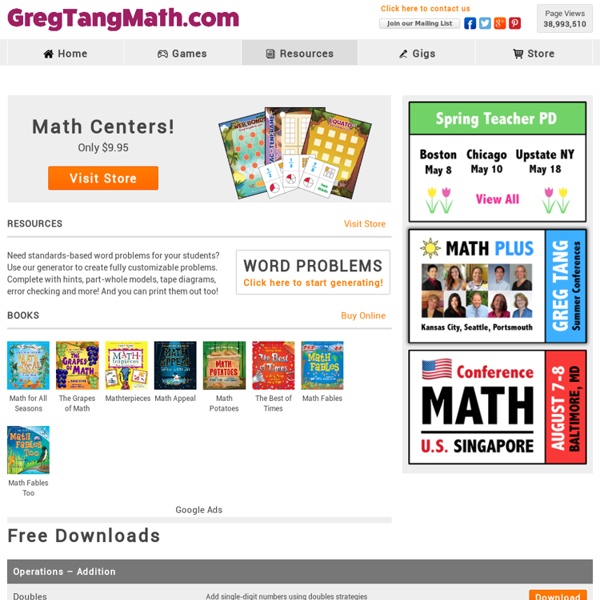



Math Tools | TeachBytes I have to admit it… I’m obsessed with MangaHigh’s Flower Power game. Why? Because it’s just plain fun! With the influx of educational games in the past few years, it becomes more and more challenging to find one that manages to hold a student’s attention while allowing them to practice skills. Most of my sixth-grade students are obsessed with sports. Currently, our sixth graders are learning about simple and complex probability. For the past few weeks I’ve seen our sixth grade students practice fractions in a multitude of ways. If you have students who struggle with the concept of a number line or even a student who just needs more practice, Pearl Diver might be just the thing for you. This week’s free app is Mathmateer, which is essentially a space-themed game for students to practice basic math functions. Another Monday, another free app for you to explore!
Math: Counting and Comparing Difficulties Counting and Comparing Difficulties Subitizing is the ability to recognize a number of briefly presented items without actually counting. A common response to students who are having counting problems is to simply have them do daily counting practice; however, students with counting and comparing difficulties also benefit from practice that utilizes patterns and relationships. (See the example strategy below.) Example Strategy: Using Icons of Quantity To Teach Whole-to-Part Relationships Woodin: The ability to identify a subordinate quantity in relation to a whole enables these quantities to be seen in a relational context that fosters comparison without employing the inefficient and often inaccurate process of counting. Teacher: “How many are you starting with?” Example Strategy: Using Patterns To Support Number Comparisons Woodin has seen impressive results from instruction that incorporates visual patterning. Strategy Demonstration: Prompt the Missing Addends to 10 About Chris Woodin:
Concrete-Representational-Abstract Sequence of Instruction Concrete - Representational - Abstract Sequence of Instruction Purpose The purpose of teaching through a concrete-to-representational-to-abstract sequence of instruction is to ensure students truly have a thorough understanding of the math concepts/skills they are learning. What is it? Each math concept/skill is first modeled with concrete materials (e.g. chips, unifix cubes, base ten blocks, beans and bean sticks, pattern blocks). [ back to top ] What are the critical elements of this strategy? Use appropriate concrete objects to teach particular math concept/skill (see Concrete Level of Understanding/Understanding Manipulatives-Examples of manipulatives by math concept area). How do I implement the strategy? When initially teaching a math concept/skill, describe & model it using concrete objects (concrete level of understanding). How Does This Instructional Strategy Positively Impact Students Who Have Learning Problems? Additional Information Create seperate pages Concrete What is it? .